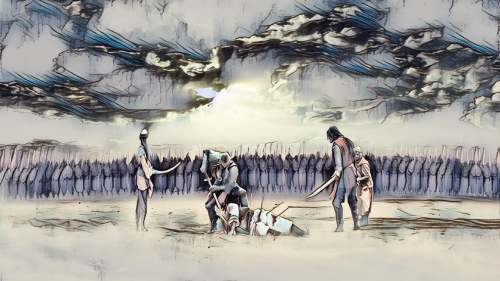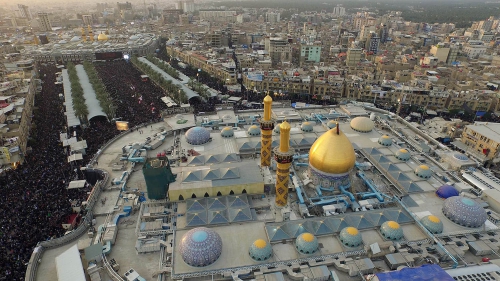Who are Children of Israel (Bani Israel)?

The Qur’an is very helpful in answering this question. Prophet Abraham is called a Muslim in the Arabic Qur’an; and in the Hebrew Bible the very same Prophet Abraham is called a Hebrew [speaker or ethnic person] and a Babylonian immigrant who crossed over the Jordan River.
The term ivri (the Hebrew) first appears in the Torah, when Prophet Abraham is called “the Hebrew: “And it was told to Abram the Hebrew” (Genesis 14:13) And Prophet Joseph uses the name ivri as both a geographical and an socio-ethnic term: “I was kidnapped from the land of the ivrim” (Genesis 40:15), and “The Egyptians could not eat with the ivrim, since that would be an abomination” (Gen. 43:32)
The word Muslim is a religious identity term that refers to faithful monotheistic believers and can be used to describe Christians or Jews. The word Hebrew is a linguistic, geographical and ethnic identity term like German the language, Germany the homeland and Germans the people. The word descendent, as in Children of Israel, is a biological inherited birth identity term like nobility or tribe.
Prophet Abraham was the first Islamic Hebrew, as the Qur’an 3:67 states: ““He (Abraham) was not Yahuudiyyan, "a Jew", nor Nasraaniyyan, "a Christian", but rather a Haniifan i.e. “a monotheistic Hebrew believer submitting (Islam) to the one imageless God who created all space and time; and who made Prophet Abraham the Hebrew’s descendants through Prophets Isaac and Jacob (Israel), into a great multitude of monotheists called the Children of Israel - Bani Israel.
“And who is better in religion than one who submits himself to Allah while being a doer of good and follows the religion of Abraham, inclining toward truth? And Allah took Abraham as an intimate friend.” (Qur’an 4:125)
The name Israel first appears in the Hebrew Bible in Genesis 32:29. Derived from yisra, "to prevail over" or "to struggle with", plus the general Semitic word for God, El. It is given to Jacob by an unnamed man with whom Prophet Jacob has wrestled all night; because Jacob has "striven with God and with men, and ... prevailed”.
The name Israel first appears in non-biblical sources about 1209 BCE, in a brief inscription of the 19th dynasty Egyptian pharaoh Merneptah that says simply: "Israel is laid waste and his seed is not". The inscription refers to an ethnic people, not to an individual or a nation state.
Three Egyptologists have suggested that the name Israel also appears in a topographical relief that either dates to the period of the 19th dynasty (perhaps during the reign of Ramses II) or even earlier during the 18th dynasty.
Why were the Hebrews enslaved in Egypt? The Bible says: “A new king (19th dynasty), unacquainted with Joseph came to power in Egypt and told his people, ‘Look, the Israelite people are more numerous and more powerful than we are. Let’s be careful how we treat them, so that when they grow numerous, if a war breaks out they won’t join our enemies, fight against us, and leave our land.’” (Exodus 1:8-10)
A French Egyptologist, Alain Zivie, points to another view: Pharaoh’s vizier ‘Abdiel; whose Semitic name means ‘a servant of [the god] El’.
‘Abdiel’s name is unusual. In Egyptian, it is ‘Aper-El. ‘Aper is the Egyptian way to render the Semitic word ‘abed, which means “servant.” So, Alain Zivie believes that the vizier’s name actually would have been pronounced “‘Abdiel.” The second part of his name consists of the name of the god El, the head of the Syro-Canaanite pantheon. Thus, “‘Abdiel” means “servant of [the god] El.” El is also the generic Semitic term for “god” and one of the names of the Israelites’ God in the Hebrew Bible.
In 1980, Egyptologist Alain Zivie began excavating a rock-cut tomb in Saqqara, Egypt (near Cairo). In 1987, they discovered the tomb’s burial chamber with the remains of the Egyptian vizier ‘Abdiel, his wife Tauret, and his son Huy. Each had been buried in three coffins.
Extraordinary grave goods filled the room: canopic jars, a diadem, and a wood cubit listing some of ‘Abdiel’s prestigious titles, to name a few. These items, along with the tomb’s inscriptions and illustrations, help paint a picture of ‘Abdiel’s importance in ancient Egypt.
In his article “Pharaoh’s Man, ‘Abdiel: The Vizier with a Semitic Name” published in the July/August 2018 issue of Biblical Archaeology Review, Alain Zivie explores this intriguing figure, the Egyptian vizier ‘Abdiel, who lived in the 14th century B.C.E. and who likely served two pharaohs, Amenhotep III and Amenhotep IV (better known by his later name Akhenaten).
‘Abdiel had many titles, including “chief of the town, vizier,” “general of the horses,” “chief in the entire land,” “messenger of the king” (ambassador), and “father of the god” (senior advisor who knew the pharaoh as a child). ‘Abdiel is the only vizier in the history of ancient Egypt to be called “child of the kap” (someone raised or educated in the palace). He also bears the title “first servant of Aten in …”
Although this title’s ending is not readable, the surviving part shows that ‘Abdiel was connected to the Egyptian god Aten, whose worship rose to prominence during Akhenaten’s reign.
An official (possibly of foreign origin) with a Semitic name, meaning “servant of [the god] El,” who became a vizier in ancient Egypt, may remind many of the figure of Joseph in the Bible. Alain Zivie is quick to clarify that he is not identifying ‘Abdiel with Joseph, nor is he claiming that Joseph was a historical person.
In the Bible, Joseph, son of Jacob (also called Israel) and Rachel, is born in Haran (northern Levant). His family settles in the land of Canaan (southern Levant), and he grows up there until his brothers sell him into slavery (around age 17). He ends up in the household of an Egyptian officer named Potiphar, who was captain of the guard. Joseph excels in Potiphar’s household until Potiphar’s wife frames Joseph for attempted assault. So Joseph lands in prison, where he stays for several years.
During that time, he interprets dreams for two members of Pharaoh’s household. Joseph’s interpretations come true, and two years later, when Pharaoh has disturbing dreams, Joseph’s skill of interpreting dreams is remembered. Joseph is summoned from prison and interprets Pharaoh’s dreams—predicting a severe famine. Pharaoh then makes Joseph (at age 30) second-in-command of Egypt and puts him in charge of storing provisions for the famine. In this role, Joseph is later reconnected with his brothers, who go to Egypt to buy grain, and eventually with his entire family. Joining Joseph, they take refuge from the famine in Egypt (Genesis 30–47).
There are many similarities between the Biblical figure of Joseph and the vizier ‘Abdiel. Both have Semitic names (and likely origins) and rise to prominent positions in Egypt. However, although these commonalities are striking, it is not possible to correlate the two—based on the existing archaeological evidence.
However, this (perhaps influenced by the Israelites’ Abrahamic monotheism) vizier, who lived in the time of Akhenaten’s reign; might have been the stimulus for the young Pharaoh Akhenaten’s forceful, personal, push for the royal household and the nobility to worship the one solar disc.
When after Pharaoh Akhenaten’s death, the movement and the dynasty pooped out; the new 19th dynasty may have started persecuting the Children of Israel. In 1320 B.C.E., after Akhenaten’s religious revolution, many notables were allowed to go into exile in the Canaan province, more specifically in Shechem and Urushalim (Jerusalem).
The discovery by Alain Zivie of the tomb of Akhenaten’s vizier Abdi-El at Memphis suggests a close family relationship between Abdi-Heba, Mayor-Governor of Urushalim, and Akhenaten’s top officials.
The Greek term Ioudaios (Jew) originally referring to members of the Tribe of Judah, and by extension the inhabitants of the Kingdom of Judah and the Judean region, later became a self-designation by people in the Jewish diaspora who identified themselves as loyal to the God of Israel and the Temple in Judea (Jerusalem).
Thus the Qur’an is right: “He (Abraham) was not Yahuudiyyan, "a Jew", nor Nasraaniyyan, "a Christian", but rather a Haniifan” (Qur’an 3:67) i.e. “a monotheistic Hebrew believer submitting (Islam) to the one imageless God who created all space and time; and who made Prophet Abraham the Hebrew’s descendants through Prophets Isaac and Jacob (Israel), into a great multitude of monotheists called the Children of Israel - Bani Israel.
Rabbi Maller has published over 650 articles on Jewish values in over two dozen Christian, Jewish, and Muslim magazines and web sites. His most recent books are "Judaism and Islam as Synergistic Monotheisms' and "Which Religion Is Right For You?: A 21st Century Kuzari" both available on Amazon.
Topics: Egypt, Egyptology, Exodus, History, Israel, Jews, Pharaoh, Prophet Ibrahim (Abraham), Prophet Moses (Musa), Prophet Yacub (Jacob), Prophet Yusuf (Joseph)
Views: 24857
Related Suggestions

















